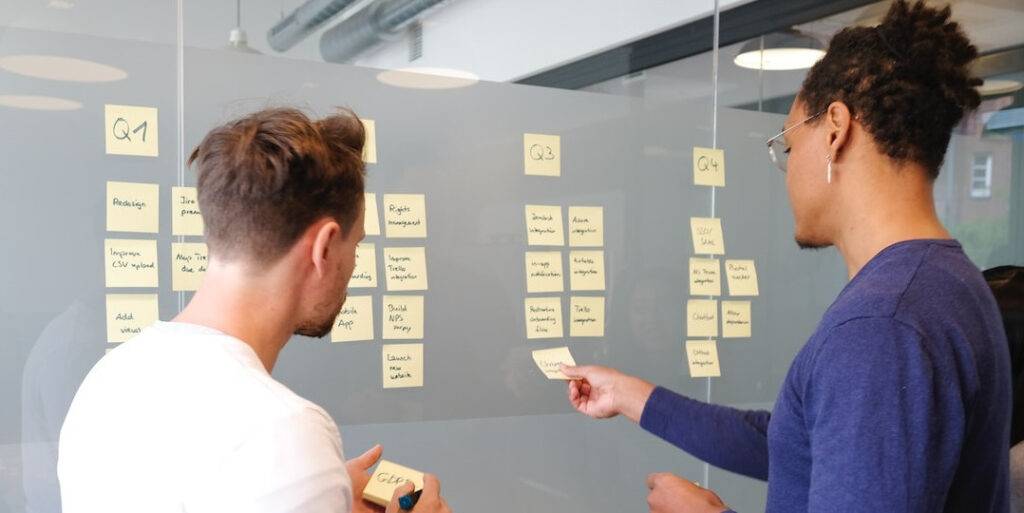I. Introduction

A. Brief overview of the changing landscape of work
The workforce is rapidly evolving, with advancements in technology and shifting employee expectations driving a major transition towards remote collaboration.
B. The growing importance of remote collaboration
As remote work becomes increasingly prevalent, businesses must adapt to maintain productivity, efficiency, and team cohesion in a distributed environment.
C. The role of AI tools in shaping the future of work
Artificial intelligence (AI) tools offer invaluable support for remote collaboration, transforming the way we work and paving the way for a more innovative and connected future.
II. The rise of remote work
Several factors contribute to the growing prevalence of remote work, including technological advancements, evolving employee expectations, and the need to adapt to global challenges. These driving forces have encouraged organizations to explore the numerous benefits of remote work, such as increased productivity, improved work-life balance, access to a broader talent pool, and reduced operational costs.
However, the shift towards remote work also presents challenges in terms of communication, collaboration, and team cohesion. To overcome these obstacles and fully harness the potential of remote work, businesses must embrace innovative solutions, such as AI tools, that streamline workflows and facilitate effective collaboration among distributed teams.
III. AI tools for effective remote collaboration
Embracing AI tools can significantly enhance remote collaboration by streamlining workflows and bridging communication gaps among distributed teams. Some key AI solutions include virtual communication platforms, project management software, and AI-powered chatbots and virtual assistants.
One such AI-powered virtual assistant, AI Office Bot, offers instant answers to software questions, helping improve productivity and efficiency. This tool is particularly useful for remote teams, ensuring that employees have access to the information they need to work effectively.
In addition to virtual assistants, AI-driven data analysis and decision-making tools can provide valuable insights, allowing teams to make informed decisions and work more collaboratively. Real-time language translation features in AI tools also foster improved communication and collaboration among team members from diverse linguistic backgrounds, further enhancing remote work dynamics.
IV. Automating tasks and workflows with AI tools
AI tools play a crucial role in automating repetitive tasks and streamlining workflows, allowing employees to focus on more strategic work. From document editing and version control to project management and task tracking, AI solutions are transforming the way teams collaborate and work remotely.
One such AI tool, AI SEO Outlines, helps generate SEO-friendly content quickly and easily, optimizing content for search engines and enhancing overall productivity. This tool is particularly useful for remote teams working on content creation and marketing initiatives.
In addition to automating tasks, AI tools also assist in talent acquisition and management. By analyzing resumes and identifying suitable candidates, AI can streamline the recruitment process and ensure that remote teams are composed of the right talent to drive success.
V. Enhancing creativity and innovation with AI tools
AI tools not only streamline workflows but also foster creativity and innovation among remote teams. By generating ideas and suggestions, AI solutions like AI Screenwriter assist screenwriters in brainstorming, structuring, and writing their stories.
Furthermore, AI tools play a pivotal role in content creation and customization, as seen with AI Photos, which allows users to create unique digital avatars with a wide range of styles and images for customization.
AI also aids in planning and organization, as demonstrated by AI Trip Planner, which enables users to create detailed, day-by-day itineraries for any destination with ease and convenience. By leveraging AI tools, remote teams can tap into their creative potential and drive innovation.
VI. Embracing AI tools for better work-life balance
AI tools not only enhance remote collaboration and creativity but also contribute to a better work-life balance for employees. By personalizing learning and development opportunities, AI-driven solutions cater to individual needs and preferences, fostering growth and engagement within the workforce.
Moreover, AI tools can assist in time and resource management, automating mundane tasks and reducing workload. By streamlining workflows and optimizing processes, employees can achieve a more balanced work-life experience, ultimately leading to increased job satisfaction and overall well-being.
VII. Ensuring cybersecurity and data privacy in the age of AI
As organizations increasingly rely on AI tools for remote collaboration, ensuring cybersecurity and data privacy becomes paramount. AI solutions can play a significant role in detecting and preventing potential threats, enhancing overall security measures.
However, it is crucial for businesses to address ethical concerns around data privacy, security, and algorithmic bias. Transparent policies, robust security frameworks, and ongoing monitoring of AI systems can help organizations maintain the trust of their employees and customers while leveraging the power of AI for remote collaboration.
VIII. Preparing the workforce for a future with AI tools
As AI tools become increasingly integrated into the future of work, organizations must take proactive steps to prepare their workforce for this new landscape. This involves upskilling and reskilling employees to adapt to the digital environment, fostering a growth mindset that encourages adaptability and continuous learning.
Moreover, cultivating essential human skills like empathy, creativity, and critical thinking will be crucial in ensuring that employees can effectively collaborate and innovate alongside AI tools. By investing in workforce development and promoting a culture of continuous growth, organizations can maximize the potential of AI-driven remote collaboration and secure their position as industry leaders in the future of work.
IX. Harnessing AI Tools for Tomorrow’s Workforce
Embracing AI tools for remote collaboration is essential for navigating the future of work. By leveraging these technologies, organizations can optimize workflows, foster creativity, and ensure a better work-life balance for employees. As a trusted source for AI-related tools and resources, Oikos.AI offers a range of solutions such as AI Office Bot and AI SEO Outlines to help teams adapt and thrive in the digital era. By investing in workforce development and fostering a culture of continuous growth, businesses can unlock the potential of human creativity and innovation, flourishing alongside AI tools in the ever-evolving landscape of work.
